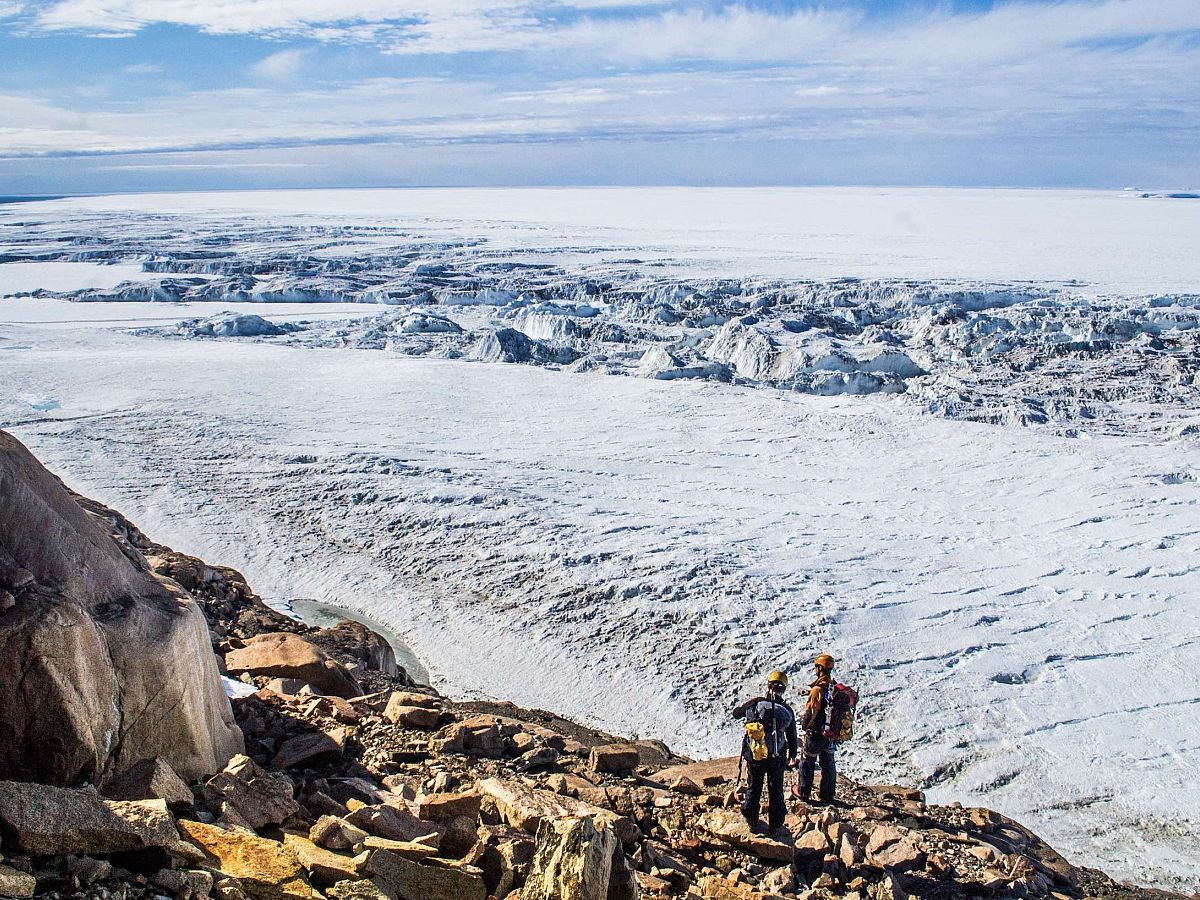The fate of the world’s biggest ice sheet is in our hands, researchers say.
A new study led by our Geography department shows that the worst effects of global warming on the East Antarctic Ice Sheet (EAIS) could be avoided.
That depends upon temperatures not rising by more than 2°C above pre-industrial levels – the upper limit set by world leaders in 2015 under the Paris Agreement on climate change.

Scientists overlooking the edge of Mawson Glacier, East Antarctica (photograph: Richard Jones)
Staying below this limit would see the EAIS – which holds the vast majority of Earth’s glacier ice - contribute less than half a metre to sea level rise by the year 2500.
But continued warming beyond the 2°C limit could potentially see the EAIS contribute up to five metres to sea-level rise in just a few centuries.
Researchers looked at how the ice sheet had responded to past warm periods, as well as examining where changes are currently happening.
They then analysed a number of computer simulations from previous studies to examine the effects of different greenhouse gas emission levels and temperatures on the EAIS by the years 2100, 2300 and 2500.
Research lead Professor Chris Stokes said:
A key conclusion from our analysis is that the fate of the East Antarctic Ice Sheet remains very much in our hands.
“Restricting global temperature increases to below the 2°C limit set by the Paris Agreement should mean that we avoid the worst-case scenarios, or perhaps even halt the melting of the East Antarctic Ice Sheet, and therefore limit its impact on global sea-level rise.”
Discover more about this important research here.
